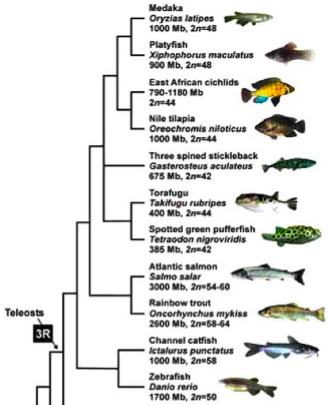Classification
Domain: Eukarya
The Japanese puffer fish has membrane bound organelles and linear DNA that is contained in a membrane bound nucleus.
Kingdom: Animalia
They are multicellular, reproduce sexually and do not make their own food (hetertrophic).
Phyla: Chordata
They have a hollow nerve cord that is dorsal to the spinal cord, bilateral symmetry, a complete digestive tract, a thyroid gland, and a post anal tail. Their embryo also have gill slits.
Class: Actinopterygii
They are fish with ray fins that are webs of skin supported by bones.
Order: Teteraodontiformes
They are fish that have moved away from the long and thin body plan, in this order is found box-like, globular, square, and flat. These fish have highly modified skeletons, often with bones absent.
Family: Tetraodontidae
This family of fish have four large teeth that are fused into two grinding platforms, an upper and a lower. They are also the non-spiny, non-armored puffer fish.
Genus: Takifugu
Puffer fish that can be located between 45° latitude north and 45° latitude south. They are also all have very similar DNA sequences.
Species: Takifugu rubripes
Puffer fish that is found in North Western Pacific. Gray color on dorsal side and while covering on ventral side.
The Japanese puffer fish is very closely related to all other puffer fish and also blowfish, balloon fish, globe fish and toad fish. This phylogenic tree is showing the presumed timing of genetic duplication. This figure is used with permission, from Fish Genomes, Comparatvie Genomics and Vertebrate Evolution by Froschauer, A., et. al. The Teleosts (3R) are comprised of fish who have whole-genome duplication.
